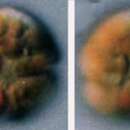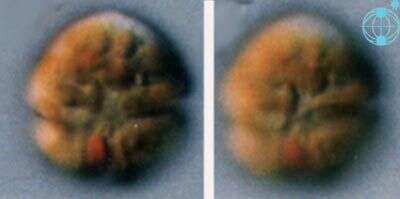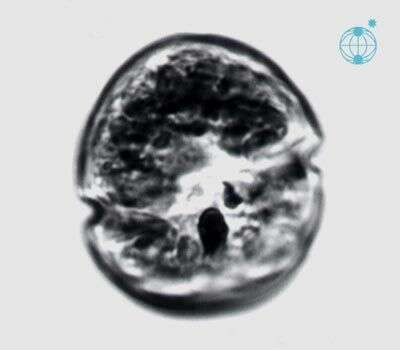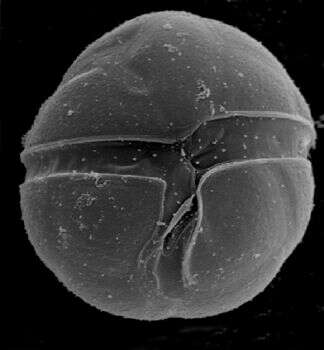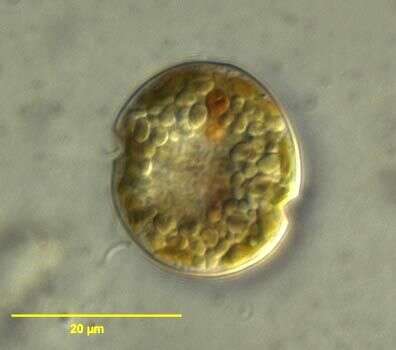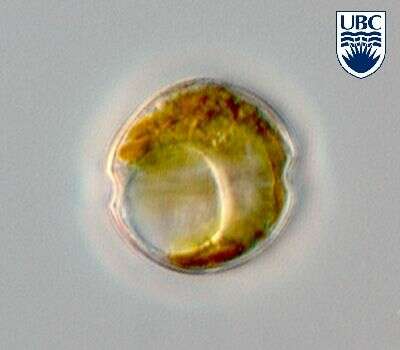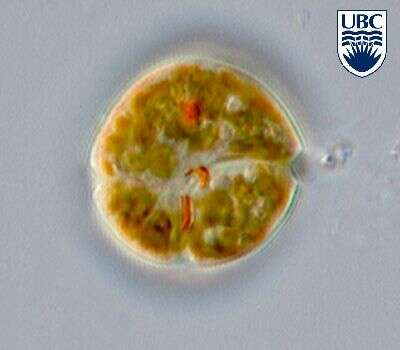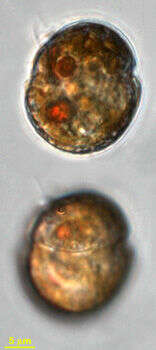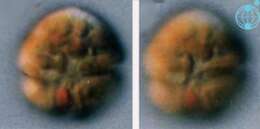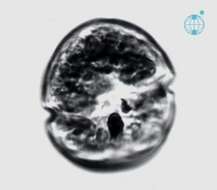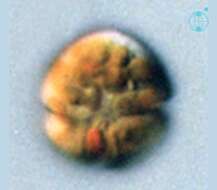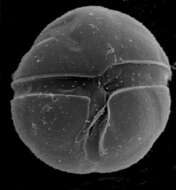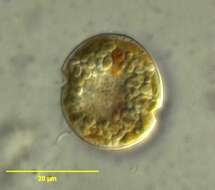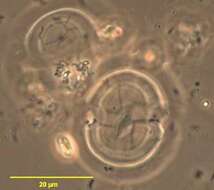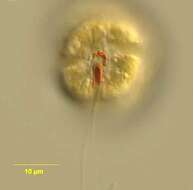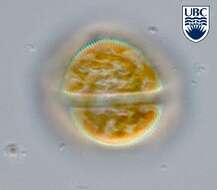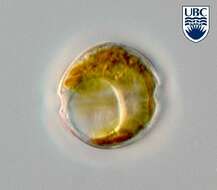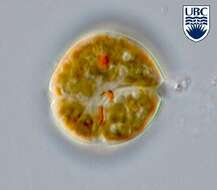-
Durinskia (dew-rink-see-a) baltica (Levander 1894) Carty and Cox 1986. The images show cells in ventral view. The red stigma is visible in the sulcal area. The plastids are yellow-brown and multiple. The cingulum is in the middle of the cell.
-
Durinskia (dew-rink-see-a) baltica (Levander 1894) Carty and Cox 1986. The image shows a cell in ventral view. The stigma is visible in the sulcal area. The plastids are yellow-brown and multiple. The cingulum is in the middle of the cell.
-
Durinskia (dew-rink-see-a) baltica (Levander 1894) Carty and Cox 1986. The image shows a cell in ventral view. The red stigma is visible in the sulcal area. The plastids are yellow-brown and multiple. The cingulum is in the middle of the cell.
-
Durinskia baltica cells are round from the ventral side, slightly dorso-ventrally flattened, 16 - 28 microns long, 15 - 27 microns wide, and approximately 19 microns broad. Thecal plates present: an apical pore, a canal plate, 4 apical plates, 2 anterior intercalary plates, 7 precinguluar plates, 5 cinguluar plates, 4 sulcal plates, 5 postcingular plates, 2 posterior plates. Second apical intercalary plate much larger than the first and extending across the dorsal side. Cingulum 2-3 microns wide, consists of 5 plates, including a transitional plate. The large anterior sulcal plate forming a list over the left sulcal plate. Thecal plates smooth, with scattered pores (about 0.2 microns). Pores form a row along the edge of the cingulum. Nucleus round, in the centre or in the left side of the cell, approximately 7 microns. Reddish stigma, approximately 4 microns long, present in the sulcus. Yellow- brown plastids, 2 - 3 microns diameter, scattered throughout the cell.
-
Durinskia baltica, observed in marine muds and sandy sediments in the vicinity of Broome, Western Australia in September 2003. This image was taken using differential interference contrast optics. This work was supported by the Australian Biological Resources Study.
-
Durinskia baltica theca observed in marine muds and sandy sediments in the vicinity of Broome, Western Australia in September 2003. This image was taken using phase contrast optics. This work was supported by the Australian Biological Resources Study.
-
Durinskia baltica, showing its stigma, observed in marine muds and sandy sediments in the vicinity of Broome, Western Australia in September 2003. This image was taken using differential interference contrast optics. This work was supported by the Australian Biological Resources Study.
-
Durinskia baltica (Levander 1892) Carty et Cox 1986. This phototrophic species is also known from the plankton. Cell in ventral view, note the bright red stigma in the sulcal area.
-
Durinskia baltica (Levander 1892) Carty et Cox 1986. Dorsal view showing the cingulum (transverse furrow) and golden-brown chloroplasts.
-
Durinskia baltica (Levander 1892) Carty et Cox 1986. Mid cell focus showing the large pusule.
-
Durinskia baltica (Levander 1892) Carty et Cox 1986. Cell in ventral view. Visible are the bright red stigma (consisting of two parts) in the sulcal area, a red food body in the upper cell half, and golden-brown chloroplasts.
-
Durinskia_baltica. Collected by ATOL team at Oyster Pond near to Woods Hole, Massachusetts, during the Protistology Workshop at MBL. October-November 2005. Isolation and art by Adrian Reyes-Prieto.

